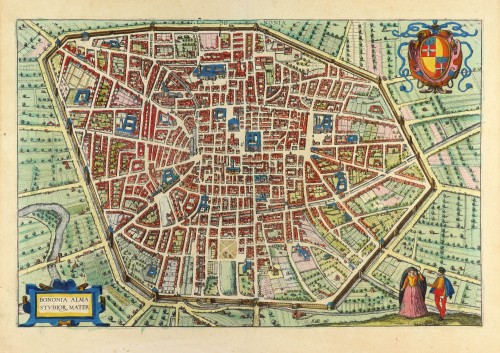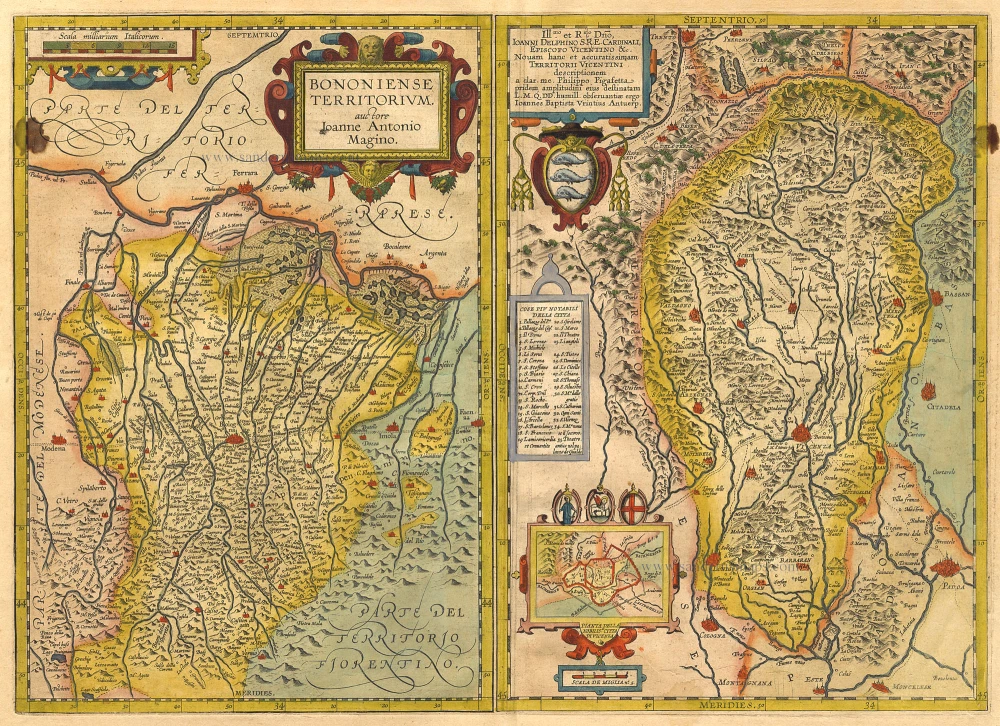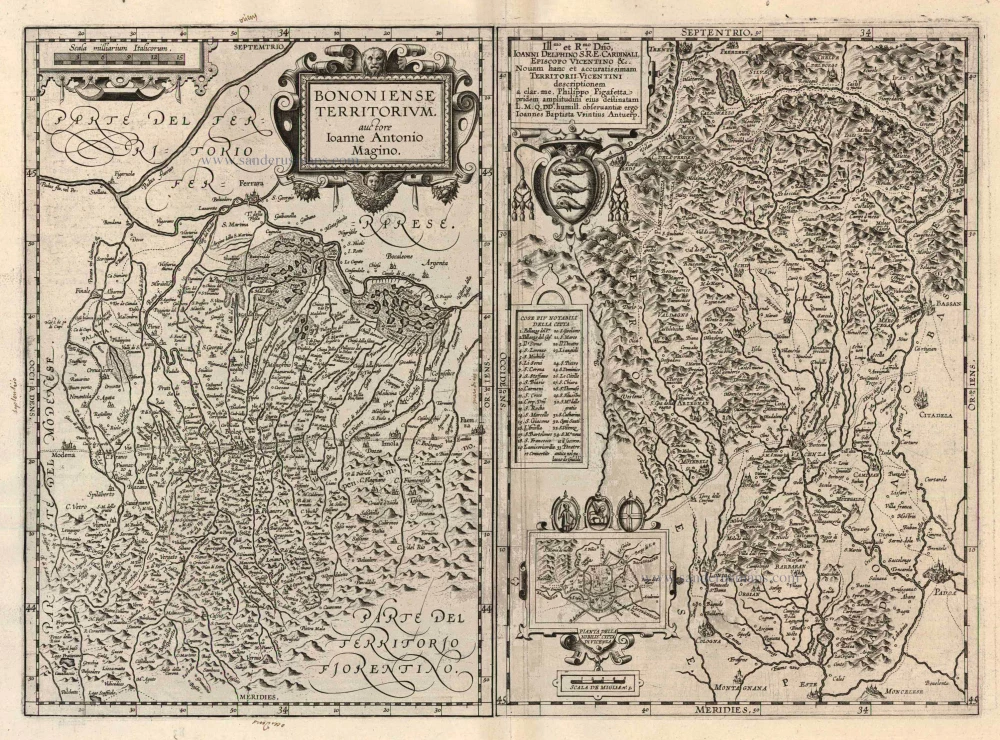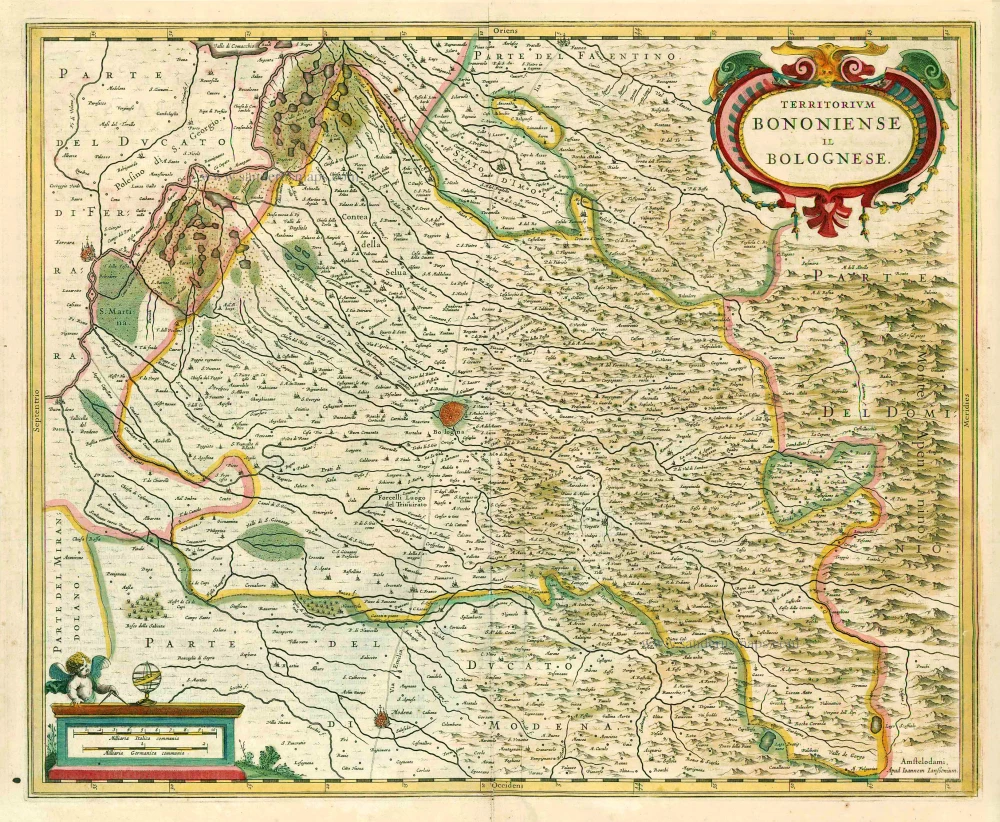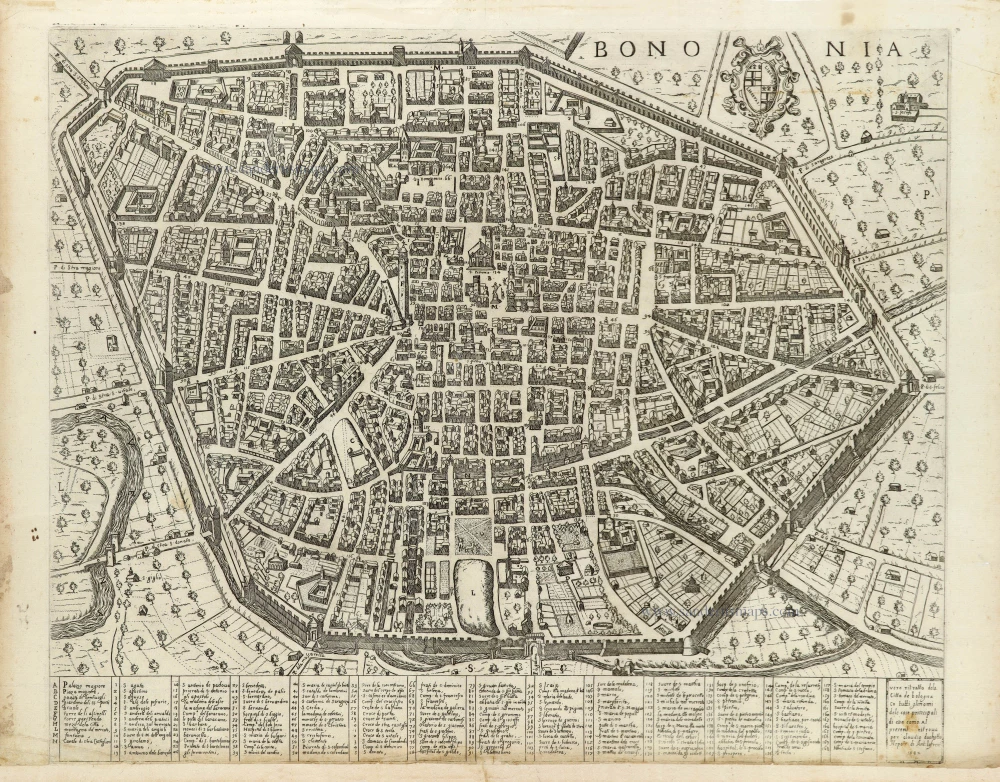Bologna by Braun & Hogenberg 1635
CARTOUCHE: Bologna, the seat of the sciences.
COMMENTARY BY BRAUN (on verso): "As for the other famous buildings, the town hall of Bologna is uncontestedly one of the most splendid buildings in all of Europe when one considers its beauty and size alone, without taking its age into account, especially since it is built of fired brick. In addition, there are many patrician houses here, which are handsome beyond compare and are described by Leander in his history of Bologna, for which there is not enough space here to do justice to them in a few words. The city boasts many tall towers, and the above-mentioned Asinelli tower is one of the highest in Europe. [...] Bologna was also presented with a particular adornment by Theodosius II. After his father had destroyed the city, he rebuilt it in AD 433 and granted important privileges to the university there."
Fortified with moats and walls, the city is seen from the north in this high bird's-eye view. At the centre, family towers, of which there were 180 in the Middle Ages, can still be seen. The most prominent building on the Pïazza Maggiore is the Palazzo Comunale, with its three inner courtyards intermittently under construction from 1287. The massive principal church, San Petronio, appears above the right. The vast university complex is discernible in a 16th-century palazzo between two arterial streets. Settled in prehistoric times, Bologna was one of the most important Roman cities from the 2nd century BC. Power struggles in the Middle Ages between the leading patrician families harmed the city, which was destroyed on several occasions. From the early 12th century, Bologna was celebrated for its university and outstanding legal scholars. It rivalled Florence as a centre of humanism. (Taschen)
This plate was made after a copper engraving by Claudio Duchetti in 1582.
Bononia Alma Studior Mater.
Item Number: 16427 Authenticity Guarantee
Category: Antique maps > Europe > Italy - Cities
Bologna by Braun & Hogenberg.
Title: Bononia Alma Studior Mater.
Date of the first edition: 1588.
Date of this map: 1635.
Copper engraving, printed on paper.
Image size: 330 x 500mm (13 x 19¾ inches).
Sheet size: 410 x 540mm (16¼ x 21¼ inches).
Verso: Latin text.
Condition: Original coloured, excellent.
Condition Rating: A+.
From: Civitates Orbis Terrarum. Liber quartus Urbium Praecipuarum totius Mundi. Cologne, Petrus von Brachel, 1635. (Van der Krogt 4, 41:1.4)
CARTOUCHE: Bologna, the seat of the sciences.
COMMENTARY BY BRAUN (on verso): "As for the other famous buildings, the town hall of Bologna is uncontestedly one of the most splendid buildings in all of Europe when one considers its beauty and size alone, without taking its age into account, especially since it is built of fired brick. In addition, there are many patrician houses here, which are handsome beyond compare and are described by Leander in his history of Bologna, for which there is not enough space here to do justice to them in a few words. The city boasts many tall towers, and the above-mentioned Asinelli tower is one of the highest in Europe. [...] Bologna was also presented with a particular adornment by Theodosius II. After his father had destroyed the city, he rebuilt it in AD 433 and granted important privileges to the university there."
Fortified with moats and walls, the city is seen from the north in this high bird's-eye view. At the centre, family towers, of which there were 180 in the Middle Ages, can still be seen. The most prominent building on the Pïazza Maggiore is the Palazzo Comunale, with its three inner courtyards intermittently under construction from 1287. The massive principal church, San Petronio, appears above the right. The vast university complex is discernible in a 16th-century palazzo between two arterial streets. Settled in prehistoric times, Bologna was one of the most important Roman cities from the 2nd century BC. Power struggles in the Middle Ages between the leading patrician families harmed the city, which was destroyed on several occasions. From the early 12th century, Bologna was celebrated for its university and outstanding legal scholars. It rivalled Florence as a centre of humanism. (Taschen)
This plate was made after a copper engraving by Claudio Duchetti in 1582.



